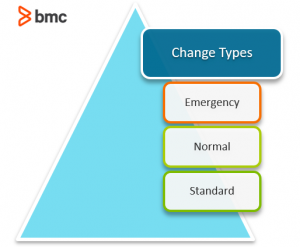All of the Following Describe Characteristics of Organizational Change Except
ERP systems provide seamless integration of information flow across the organization. ERP systems work out of the box with little configuration requirements.

Change Management Explained Change In Service Management Devops More Bmc Software Blogs
Here are my six characteristics of healthy organizational change.

. People resist change because change disrupts habits conflicts with certain personality types causes a fear of failure can have potentially negative impacts can result in a potential for loss of power and when done too frequently can exhaust employees. The change may be Reactive or Proactive. Group of answer choices ERP systems have evolved to support newer IT architectures.
Po e resistance to change is inevitable. The degree to which people are aggressive and competitive rather than easygoing. An organization may resist change.
All of the following statements about change are true EXCEPT. An organization may promote change. When it comes to organizational change one of the biggest obstacles is resistance to change.
3 If organizational components are well aligned the organization will be more effective. But at its varying rates of speed and decrease of significance. The degree to which organizational activities emphasize maintaining the status quo in contrast to growth.
Life experiences of employees strengths and weaknesses of staff education of employees and organizational mission and vision statements. Organizational culture is defined by all of the following EXCEPT. Operations Management questions and answers.
Following the chain. Organizational change has many clear benefits but can lead to misalignment and company-wide confusion without proper implementation. 11 the three critical elements of Nadler and Tushmans model for change 1The system is dynamic and therefore so is the organizational diagnosis.
Inform marketing mix decisions. Write a mission statement. Relationships will tend to be informal c.
Organizational change takes place in all parts of the organization. ______ are at the top of the hierarchy and are responsible for the entire organization especially its strategic direction. The specific need for the organizational change is real understood and meaningful to the change-recipients.
Organizational change often transcends multiple departments and job. In organizations with a high power-distance culture Blank. Marketing managers use marketing research for all of the following EXCEPT _____.
2 Congruence between components determines why the organization is performing at its current level. An organization may promote change. When change is bought about due to the pressure of external forces.
Resistance to change is inevitable. Organizational change usually happens in response to or as a result of external or internal pressures. Change for the sake of change hurts your organization.
Resistance to change should be eliminated. The study of peoples behavior is _________ behavior. According to Terry organisation is the creation of relationship among persons and work so that it may be carried on in a better and efficient way.
An organization may resist change. A bureaucratic organization is a form of management that has a pyramidal command structure. All of the following are positive aspects of control systems on organizational members EXCEPT.
The bureaucratic organization is very organized with a high degree of formality in the way it operates. Worse is faux change. You cant measure the success of your organization or any change simply by the numbers.
Resistance to change should be eliminated. Assess the ineffectiveness of marketing activities. Reduce risk and uncertainty.
Managers are likely to be treated as equals by direct reports b. It is called reactive change but proactive change is inserted by the management on its own to increase organizational. Need answer asap 7- All of the following are characteristics of an ERP system EXCEPT.
Marketing decision support system modelling software can answer questions related to all of the following EXCEPT _____. For example innovative cultures are flexible and adaptable and they experiment with new ideas while stable cultures are predictable rule-oriented and bureaucratic. The key properties of a true team include collaborative action in which along with a common goal teams have collaborative tasks.
Culture can be understood in terms of seven different culture dimensions depending on what is most emphasized within the organization. All of the following describe characteristics of organizational change EXCEPT O a. Less deterministic is the cognitive system of people with _______ levels of cognitive complexity.
Cultureis a descriptive term that is it is not evaluative. Conversely in a group individuals are responsible only for their own area. Organizational Change looks both at the process in which a company or any organization changes its operational methods technologies organizational structure whole structure or strategies as well as what effects these changes have on it.
George Terry Organising is the establishing of effective authority relationships among selected work persons and work places in order for the group to work together efficiently. Set clear goals and develop a strategy. They also share the rewards of strong team performance with their compensation based on shared outcomes.
In order to execute organizational change with glowing results take note of these five ways to ensure its success. Controlling consists of the following steps EXCEPT.

A Graphic Containing The Following Words Step Description Example Specific Exactly What Is It You Want To Understan Learning Process Teaching Practices Lesson

Lewin S 3 Stage Model Of Change Explained Bmc Software Blogs

Characteristics Of The Maturity Levels Maturity Levels Consist Of A Predefined Set Of Process Area Maturity Operational Excellence Business Process Management
No comments for "All of the Following Describe Characteristics of Organizational Change Except"
Post a Comment